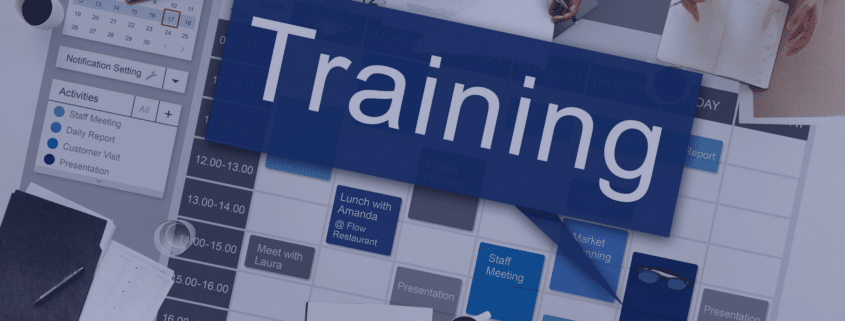Multigenerational Training Strategies: Harnessing Continuous Learning in the Modern Workplace.
The importance of continuous learning cannot be overstated. From baby boomers to Gen Z, employees spanning over multiple generations are discovering the power of ongoing education. But how can businesses foster multigenerational training strategies that caters to everyone’s unique learning style?
The Ever-Evolving World of Work.
As a staffing agency in South Africa, we understand that the professional landscape is in a state of constant evolution. From technological advancements to cultural shifts, the job market has never been more dynamic. Hence, skills that were deemed indispensable a decade ago might now be obsolete. As a result, continuous learning is seen as an essential requirement.
Additionally, the rapid change in the business world means adaptability is key. Employees not only need to keep their skills updated but also need to be agile in their approach to learning. With each passing year, newer technologies emerge, industries transform, and global dynamics shift. Therefore, the workforce has to be resilient and receptive to new knowledge. This emphasizes the necessity for companies to not just focus on hiring the right talent but also to invest in their continuous growth. After all, an informed and educated employee is an asset that can navigate and lead in this ever-evolving scenario.
As businesses understand the gravity of the changing work environment, there’s a growing realization that generational differences play a significant role in the learning ecosystem. Not all employees assimilate information the same way. The generation they belong to often dictates their learning preferences.
Generational Learning Styles: One Size Doesn’t Fit All
Different generations have distinct learning preferences, shaped by the technological and cultural environments they grew up in:
1. Baby Boomers (born 1946-1964).
They typically value face-to-face interactions and traditional learning methods. Workshops, lectures, and personal coaching resonate most with this group.
2. Generation X (born 1965-1980) .
This generation is comfortable with a mix of traditional and digital learning tools. They appreciate the flexibility of online courses but also value interpersonal connections.
3. Millennials (born 1981-1996).
Having come of age during the digital revolution, millennials are adept at e-learning platforms. They value bite-sized, interactive content and often seek peer feedback.
4. Gen Z (born 1997 onwards).
The newest entrants to the workforce, Gen Zers are digital natives. They favour highly interactive, mobile-optimized learning platforms and often engage with gamified content.
Given these distinct preferences, businesses need to adopt a multifaceted approach to training and development.
Tailoring Training Methods for Success.
By embracing a variety of training methods tailored to different generational preferences, organizations can ensure a more comprehensive and inclusive learning experience. Let’s delve deeper into these training methods and understand why they pave the way for success:
Blended Learning.
This method strategically merges traditional classroom training with online educational resources. For Baby Boomers and Gen X, who value face-to-face interactions, the classroom component provides a familiar and interactive environment. On the other hand, the online aspect appeals to younger generations who are tech-savvy and appreciate the flexibility of digital learning. The blended approach ensures that learners have multiple touchpoints and resources, catering to different learning paces and preferences.
Microlearning.
In the age of information overload, delivering concise and targeted content can be a game-changer. Microlearning breaks down complex information into bite-sized, focused chunks. For Millennials and Gen Z, who often juggle multiple tasks and may have shorter attention spans due to the digital era’s rapid information exchange, this approach ensures better retention. These concise modules can be easily integrated into daily routines, making learning a continuous and manageable process.
Peer-to-Peer Learning.
Knowledge sharing among peers is an age-old method, but its significance has grown in modern workplaces. This method fosters a culture of collaboration, where employees learn from each other’s experiences and perspectives. It’s especially valuable in bridging the generational gap, as it promotes mutual respect and understanding. A younger employee might introduce a senior colleague to a new digital tool, while the latter might share insights from years of experience. This reciprocal learning enriches the knowledge pool and fosters a sense of community within the organization.
On-the-Job Training.
There’s a profound difference between theoretical knowledge and practical application. On-the-job training allows employees to learn in a real-world context, making the learning process more relevant and tangible. This method is universally effective across all generations. For instance, a Baby Boomer might appreciate the direct, hands-on approach reminiscent of apprenticeship models, while a Millennial or Gen Z employee might value the immediate feedback and practicality it offers. By training employees in the actual environment where they’ll apply their skills, organizations ensure faster skill acquisition and better retention.
In essence, the path to success lies in recognizing the diverse learning needs of the workforce and crafting training methods that resonate with them. By implementing a mix of these approaches, businesses can not only enhance skill development but also boost morale, engagement, and overall productivity.
Seizing the Opportunity with MASA.
At the end of the day, the objective of any training program is to empower employees, improve productivity, and drive business growth. A workforce that continuously hones its skills is a formidable asset to any company. And remember, learning is a two-way street. As much as businesses invest in their employees, the returns in terms of innovation, loyalty, and productivity can be immense.
Dive into the world of MASA, where holistic development meets unparalleled expertise. Ready to embark on this transformative journey? Discover what MASA has in store for you and let’s cultivate a culture of continuous learning together.



